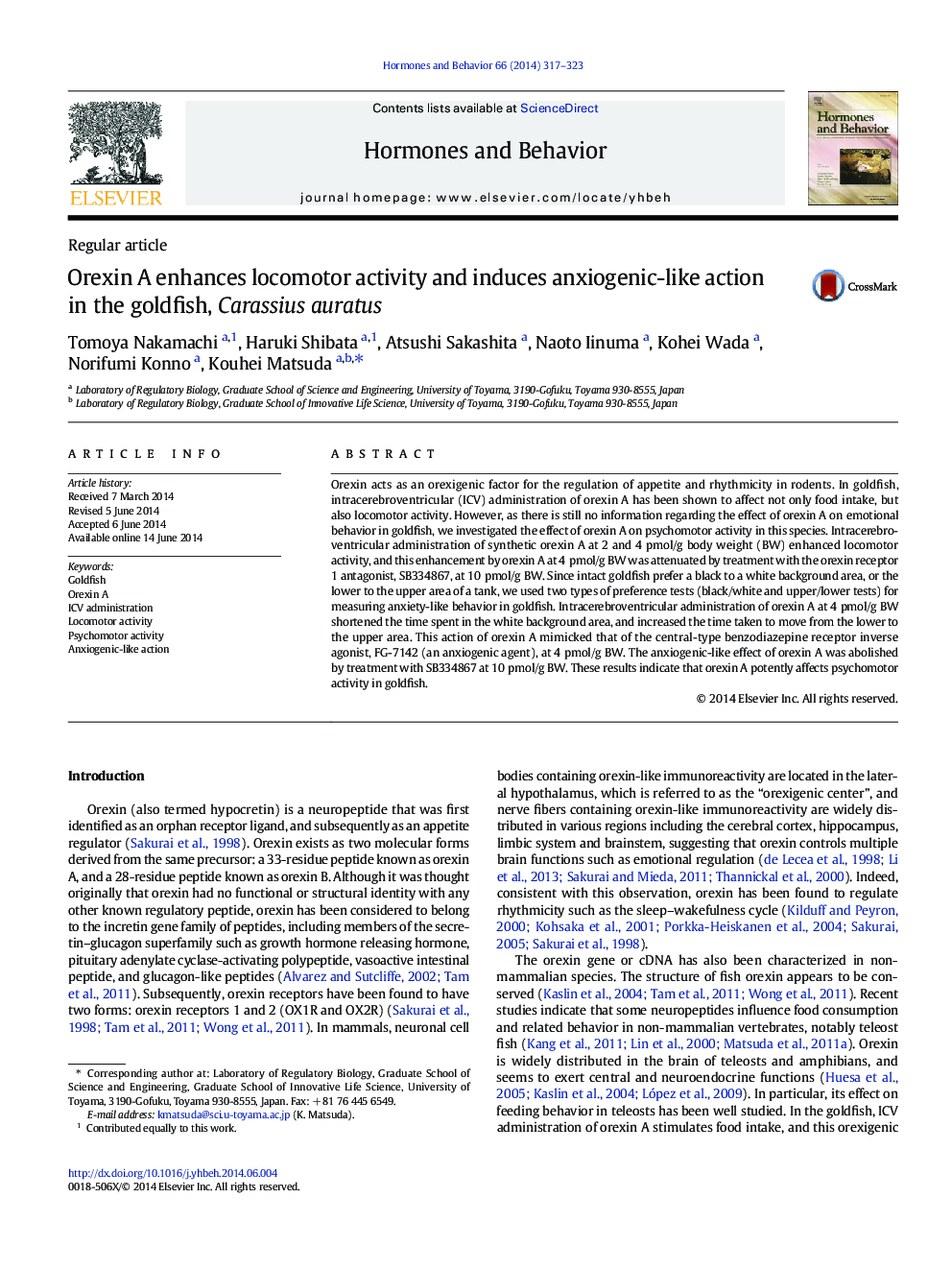| Article ID | Journal | Published Year | Pages | File Type |
|---|---|---|---|---|
| 10301057 | Hormones and Behavior | 2014 | 7 Pages |
Abstract
Orexin acts as an orexigenic factor for the regulation of appetite and rhythmicity in rodents. In goldfish, intracerebroventricular (ICV) administration of orexin A has been shown to affect not only food intake, but also locomotor activity. However, as there is still no information regarding the effect of orexin A on emotional behavior in goldfish, we investigated the effect of orexin A on psychomotor activity in this species. Intracerebroventricular administration of synthetic orexin A at 2 and 4Â pmol/g body weight (BW) enhanced locomotor activity, and this enhancement by orexin A at 4Â pmol/g BW was attenuated by treatment with the orexin receptor 1 antagonist, SB334867, at 10Â pmol/g BW. Since intact goldfish prefer a black to a white background area, or the lower to the upper area of a tank, we used two types of preference tests (black/white and upper/lower tests) for measuring anxiety-like behavior in goldfish. Intracerebroventricular administration of orexin A at 4Â pmol/g BW shortened the time spent in the white background area, and increased the time taken to move from the lower to the upper area. This action of orexin A mimicked that of the central-type benzodiazepine receptor inverse agonist, FG-7142 (an anxiogenic agent), at 4Â pmol/g BW. The anxiogenic-like effect of orexin A was abolished by treatment with SB334867 at 10Â pmol/g BW. These results indicate that orexin A potently affects psychomotor activity in goldfish.
Related Topics
Life Sciences
Biochemistry, Genetics and Molecular Biology
Endocrinology
Authors
Tomoya Nakamachi, Haruki Shibata, Atsushi Sakashita, Naoto Iinuma, Kohei Wada, Norifumi Konno, Kouhei Matsuda,
